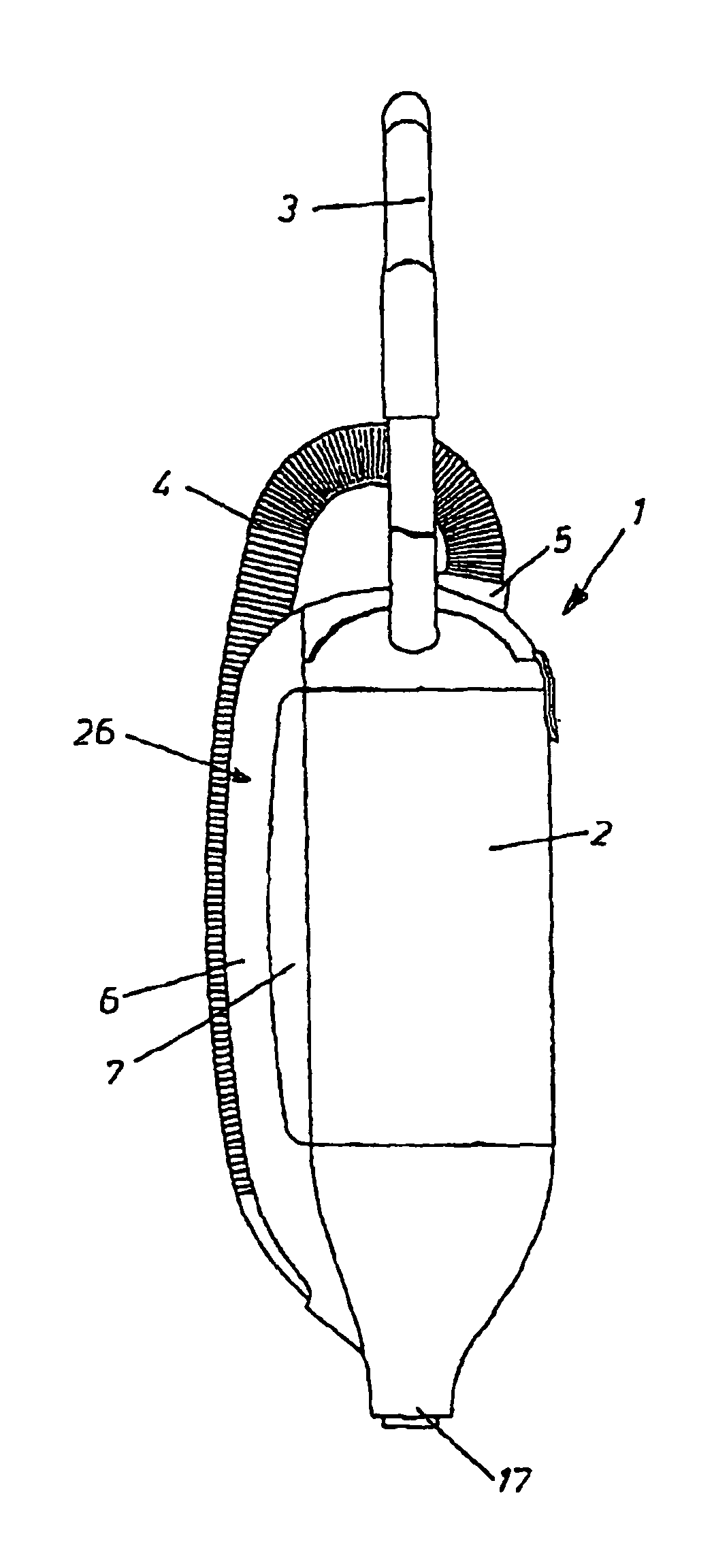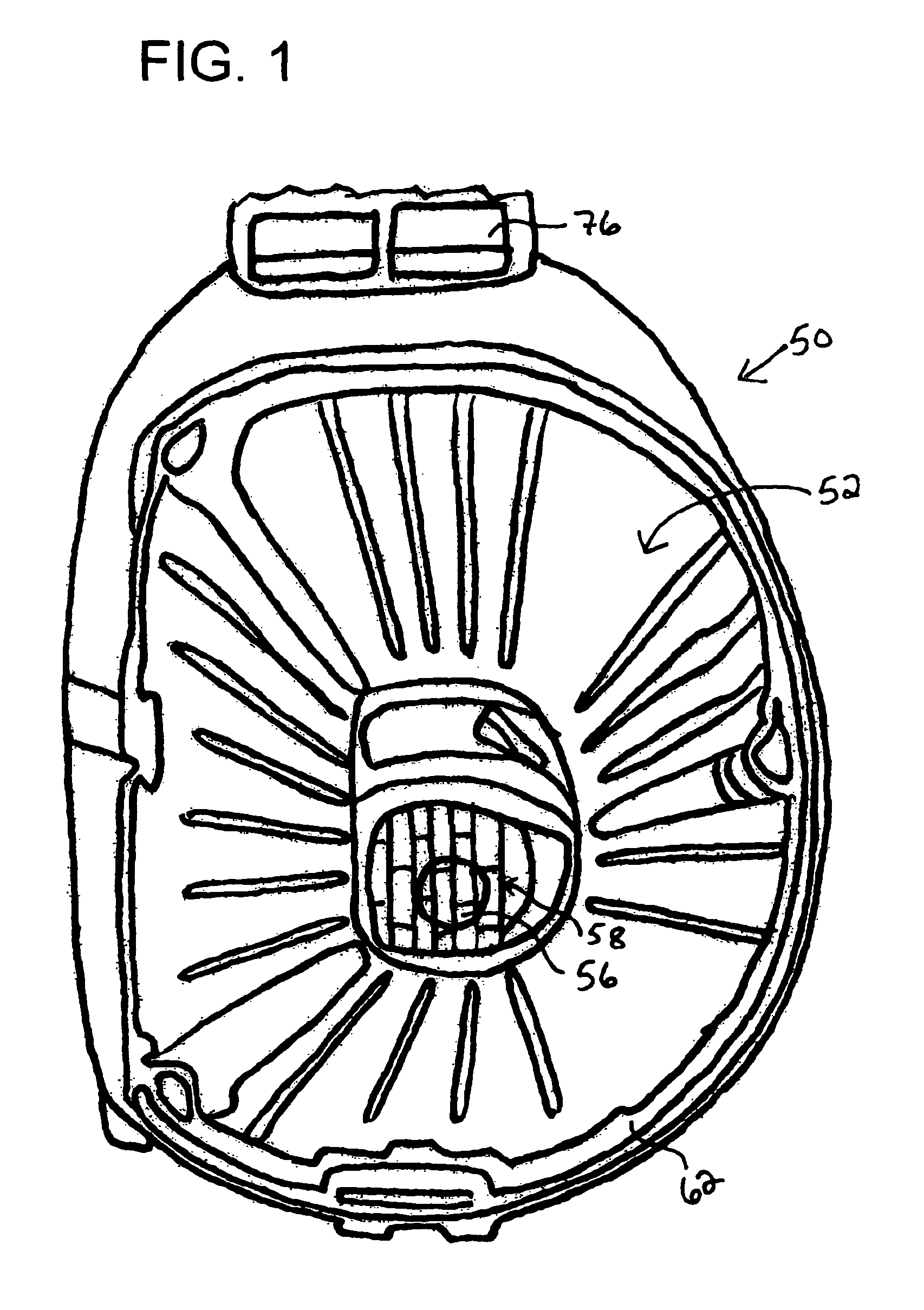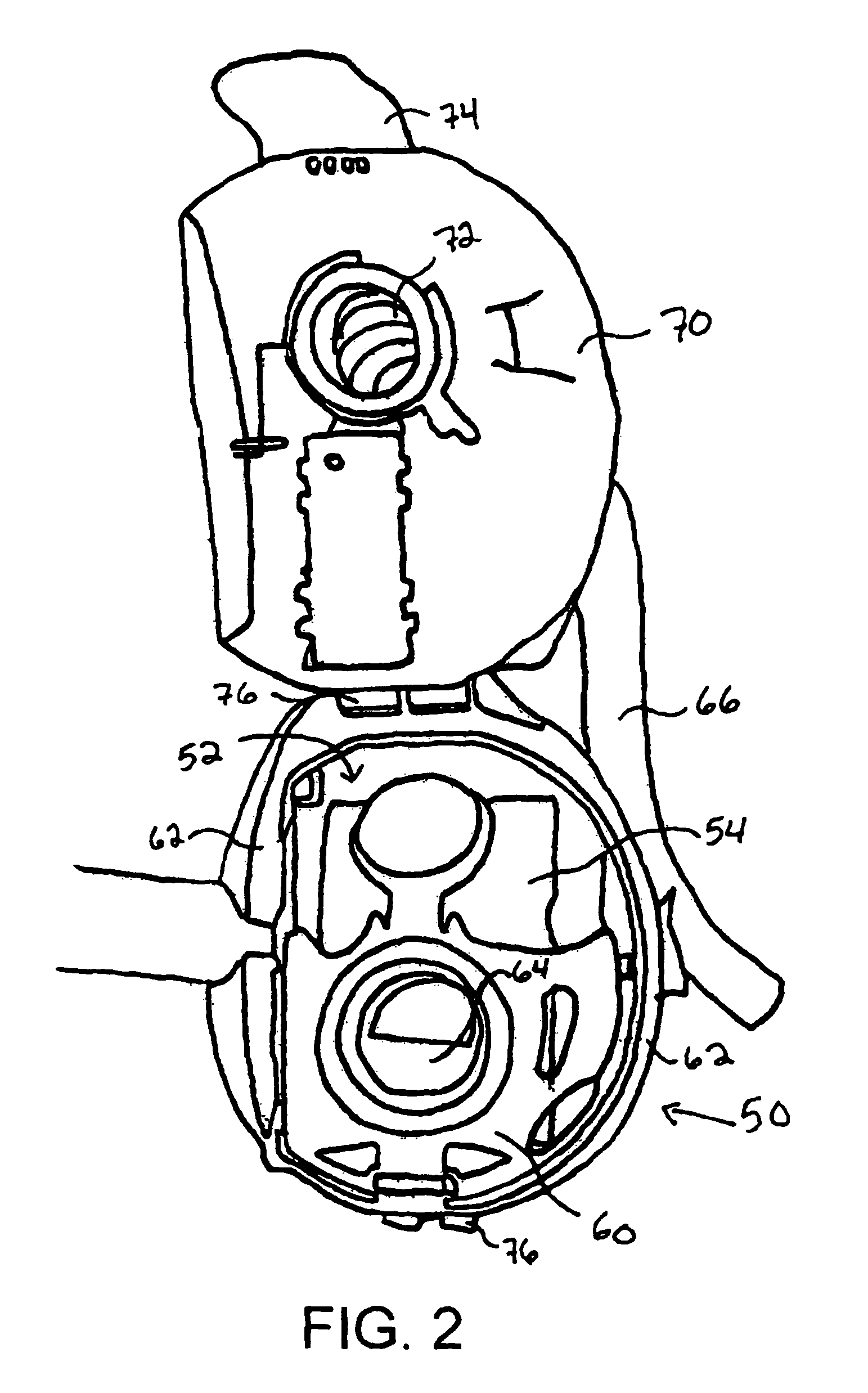Method for cleaning dirt and debris from surfaces
a technology for cleaning dirt and debris, applied in the direction of cleaning equipment, cleaning using liquids, cleaning equipment, etc., can solve the problems of complex and time-consuming conversion process of the unit from one operation to another, difficult handling of equipment, etc., and achieve the effect of avoiding any adverse effects on the surrounding exhaust and increasing the ease of operation of the vacuum cleaner body
- Summary
- Abstract
- Description
- Claims
- Application Information
AI Technical Summary
Benefits of technology
Problems solved by technology
Method used
Image
Examples
Embodiment Construction
[0026]FIG. 1 shows an overhead view of the inside of a possible embodiment of a vacuum cleaner body. In this possible embodiment, the vacuum cleaner body 50 comprises a filter bag compartment 52 for holding a filter bag 54 (as shown in FIG. 2) and a top rim 62 disposed about the top of the dust collection compartment 52. When installed, the filter bag 54 is disposed over an air exit hole 56, which air exit hole 56 allows air to flow from the filter bag compartment 52, down to the motor 8 and the motor compartment 9. The air then exits the motor compartment 9 in the manner described herein above. The filter bag 54 sits above a motor protection filter 58, which motor protection filter 58 is disposed between the air exit hole 56 and the filter bag compartment 52, preventing the filter bag 54 or any loose debris from blocking the air exit hole 56.
[0027]FIG. 2 shows an overhead view of a possible embodiment of a vacuum cleaner body 50 with a filter bag 54 installed therein. The filter ba...
PUM
| Property | Measurement | Unit |
|---|---|---|
| air flow speeds | aaaaa | aaaaa |
| shape | aaaaa | aaaaa |
| semi-hard | aaaaa | aaaaa |
Abstract
Description
Claims
Application Information
 Login to View More
Login to View More - R&D
- Intellectual Property
- Life Sciences
- Materials
- Tech Scout
- Unparalleled Data Quality
- Higher Quality Content
- 60% Fewer Hallucinations
Browse by: Latest US Patents, China's latest patents, Technical Efficacy Thesaurus, Application Domain, Technology Topic, Popular Technical Reports.
© 2025 PatSnap. All rights reserved.Legal|Privacy policy|Modern Slavery Act Transparency Statement|Sitemap|About US| Contact US: help@patsnap.com



